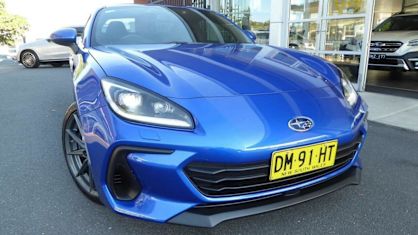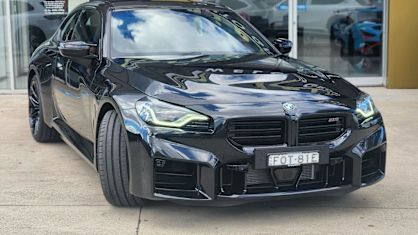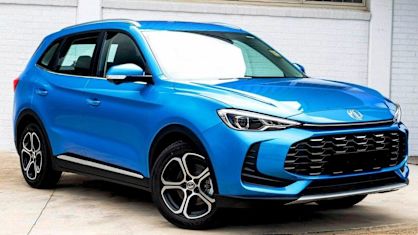Electric car fast charging infrastructure is finally popping up at an accelerated rate, thanks to an increase in funding by the federal government, and the big uptick in EV sales over the past 12 months.
Fast charging locations are appearing everywhere, from gravel parking lots besides the highway to underground locations at major shopping centres, and even on the side of the road in suburbia.
You might be wondering what goes into building one and how the locations are chosen, and whether one will pop up near you soon.
Speaking to CarsGuide at the Fully Charged Live show, Evie co-founder Paul Fox, shared a bit about the complexities and challenges it deals with when it comes to laying down fast charging infrastructure.
He says Evie currently has 107 locations, with roughly six more built but “awaiting energisation” which was a big contributor to delays in bringing chargers to the network.
“There’s roughly an 18 month lead time from approved funding until the charger is built. A lot of that lead time is getting the grid to agree to connect us.” he said.
“We won’t build things we think aren’t in good locations. The customer has to have a good experience. We have consistent pricing, support and operation.” He said while Evie has a “friendly rivalry” with its competitors, its DC fast-charging locations are more consistently reliable as it doesn’t manage a diverse set of hardware, has its own technicians, and is able to keep spares on hand.
“We’re an owner-operator, that’s our model. It's about part holdings, do you have the ability to respond? Do you have the parts on hand?”
.jpg)
But he said Evie welcomed competition, saying the brand had, in fact, expected more rivals in the market by now “We all realise that the network is going to grow so huge that there’s going to be room for more players and more business models.”
Some up-and-coming providers in the space include Jolt, which unlike the larger Evie or Chargefox has street-side charging boxes with built-in advertising. These allow customers to charge up to 7kW of power (roughly 50km of additional range for most EVs) for free.
Meanwhile, all Evie locations and most Chargefox locations have a set rate per kW for DC fast charging.
Locations are tricky. Fox says companies are faced with a conundrum when it comes to building chargers where they know demand exists, but the data is throwing up surprises. “We try to build equitable coverage. We don’t just want to build where rich people live. You know, the kinds of people who can afford to buy EVs at the moment. We try to build across the city, and sometimes you get a pleasant surprise [in usage levels].
.jpg)
So is the amount of charging speed the installed units are capable of. With a breadth of choices from 25kW as used by Jolt to a massive 350kW as used by Chargefox, some brands, like Ampol, have elected for a target of 150kW at its intercity locations as the best compromise that will suit most EVs.
Evie doesn’t have uniform hardware or speed targets for its chargers, saying that speed is more a function of the customer experience at each location.
“Available power on the site is more important” says Fox, “It’s possible to get extra installed, but the real deal? That’s customer experience. If you look at a 50kW charger in a shopping precinct as an example, that’s perfect. It might take longer, but there are amenities nearby, and people can charge while they would be doing other things anyway. It has to be a part of their day. Highways and regional? You need a lot more go there, but it’s really about matching the customer experience to the location. You also have to think about future proofing. Sure, not many cars out there right now which can make use of 350kW, but there will be when there’s more based on 800-volt architectures.”
In this move to electrification though, is there an opportunity to make our transport more sustainable through the introduction of solar panels at sites? When asked, Fox says it’s a little more complex than just placing solar panels and batteries at each site.
_0.jpg)
“We’ve built sites [with solar capacity] already. There’s a solar canopy, for example, at Coochin Creek [QLD]. At this site though, the solar only produces one tenth of the electricity required to run the charger for an hour. We could build a whole solar farm there, but then you’re not just paying for six charging bays, but a whole microgrid. We may do this kind of thing in the future, but it doesn’t make a lot of sense at the moment. Power generally comes from the grid, and we make it 100 per cent green through offsets.
“Batteries [to store solar] are expensive. You’d be making such a tiny margin. Imagine the capital investment required in the solar and the batteries for every single site. It can happen, but it’s a major effort, and it will only work at a few locations.”
For those wondering how much an individual DC fast-charging station costs: It’s a lot. While your slower AC charging solutions can cost from $500 - $4000, a fast-charging location will cost from $40,000 to $100,000 according to Australian hardware provider EVSE, with an additional $15,000 - $60,000 to place a 480-volt transformer nearby alongside the necessary upgrades to the electrical supply if need be.







.jpg)





.jpg)


.jpg)








.jpg)
.jpg)
.jpg)
.jpg)


.jpg)






.jpg)
.jpg)


.jpg)

